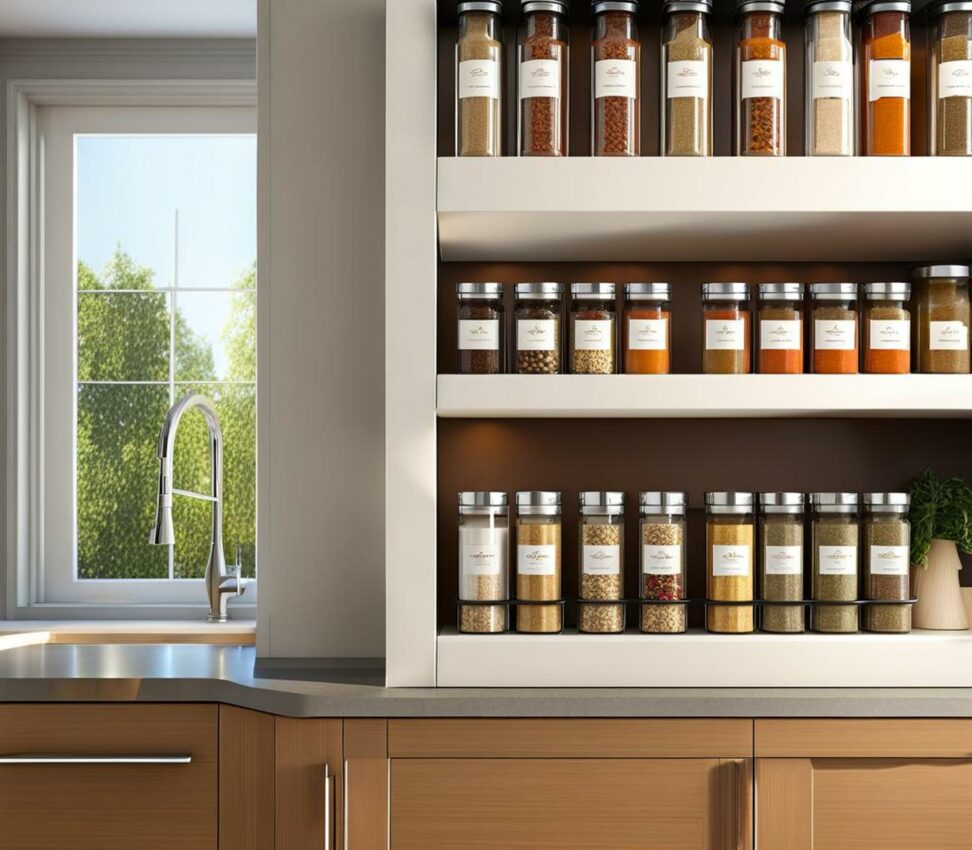DIY a Spice Rack Cabinet for Convenient, Stylish Storage
Having quick access to spices and other frequently used ingredients can make cooking much more enjoyable. But rummaging through a cluttered cabinet or drawer every time you need oregano or garlic powder is frustrating and interrupts the creative flow in the kitchen. Building a custom spice rack cabinet ensures everything you need is organized and within easy reach, saving you time and hassle.
Constructing built-in spice storage also allows you to customize the size, layout, and functionality for your unique set of spices, oils, and other small items. And integrating cabinetry into your existing kitchen design creates a cohesive, polished look. Read on to learn the complete process of planning, assembling, installing, and filling your own spice rack cabinet.

Determine the Right Spice Rack Size and Location
Before building begins, some advance planning will ensure your new spice nook is optimized for accessibility and convenience. First, inventory which spices, oils, vinegars, and other ingredients you utilize regularly. Then decide on the ideal cabinet location based on your kitchen layout and cooking habits.
Consider Access and Visibility
Mounting your spice rack near your main prep and cook area allows you to quickly season dishes without crossing the entire kitchen. Corner dead spaces come alive with storage potential for compact built-in cabinetry. For a seamless look, install next to existing cabinets or appliances. And think about visibility too--a transparent glass door provides full ingredient displays while protecting from grease splatters.
Choose Durable, Moisture-Resistant Materials
Quality materials are essential for enduring everyday kitchen use. Opt for moisture-resistant plywood or solid hardwoods like oak or maple to construct the cabinet box. Then line shelves with waterproof melamine for easy wiping. And don't forget the hardware--soft-close full extension slides provide smooth accessibility.
Build a Sturdy Cabinet Frame
With opening dimensions determined, construction begins on the actual cabinetry. Building the fixed spice rack into surrounding cabinetry or walls lends refined built-in style. But you can also create a standalone unit, affixing an enclosing face frame once complete for polished detail.
Precisely Cut Cabinet Pieces
Measure twice and cut once as the old adage goes. Precision is key to achieving an integrated look, so carefully cut front, sides, top and bottom pieces to exact cabinet specifications. Clamp pieces together securely and attach by drilling pocket holes for screws or applying wood glue before nailing. Use a carpenter's square to ensure corners align in perfect 90 degree angles.
Design a Custom Rack Insert
Now for the fun part--planning the spice rack interior to suit your unique ingredients and containers. Sketch ideas before cutting shelves and supports. Opt for adjustable shelves to enable tweaking. And consider adding extra convenience features like front lips to corral errant jars or slide-out trays for hidden storage behind your oregano and garlic powder.
Once constructed, mount your custom spice rack cabinet securely into the intended opening. Attach through the sides or back to keep the interior free of obtrusions. Build out an enclosing face frame to fit seamlessly against surrounding cabinetry and conceal edges. Then the final flourishes--add crown molding up top to bridge the transition if desired. Install knobs, pulls or handles to match existing hardware. Then stock your specialized spice stash and enjoy simplified seasoning!
You can make your own stylish built-in storage with some careful planning. No more rummaging aimlessly while simmering sauces--your custom spice nook keeps all your cooking essentials conveniently at hand for chef-worthy creations.